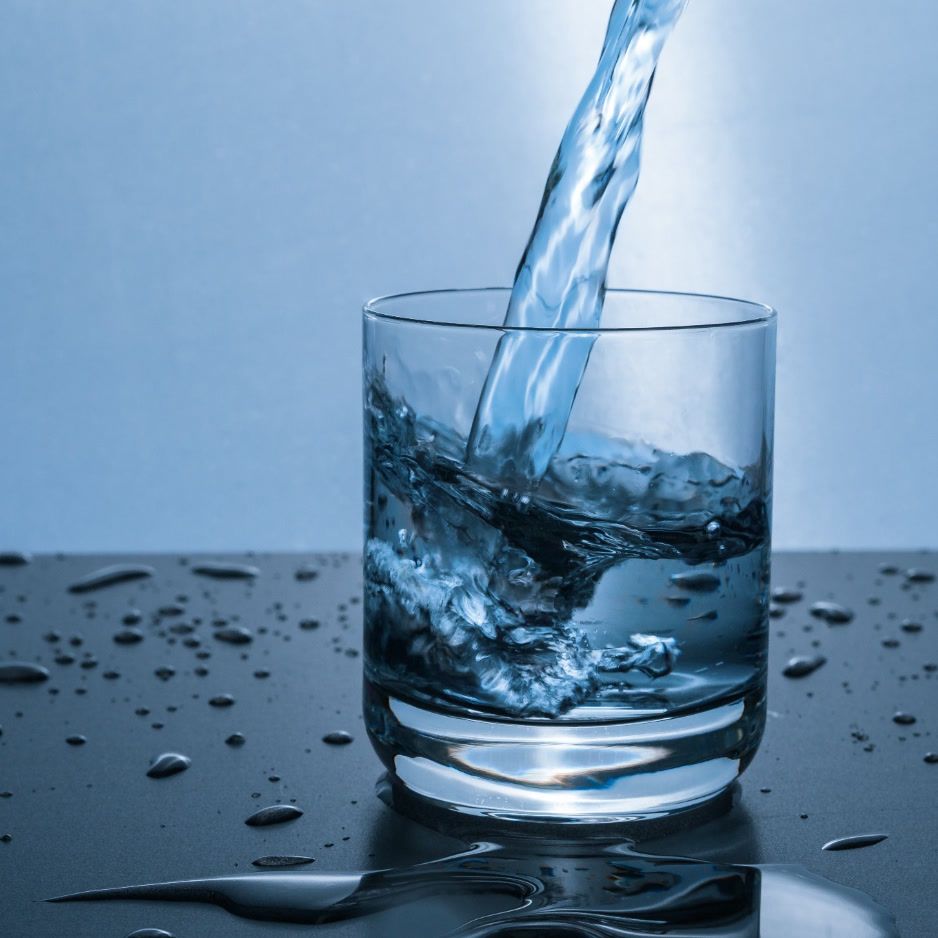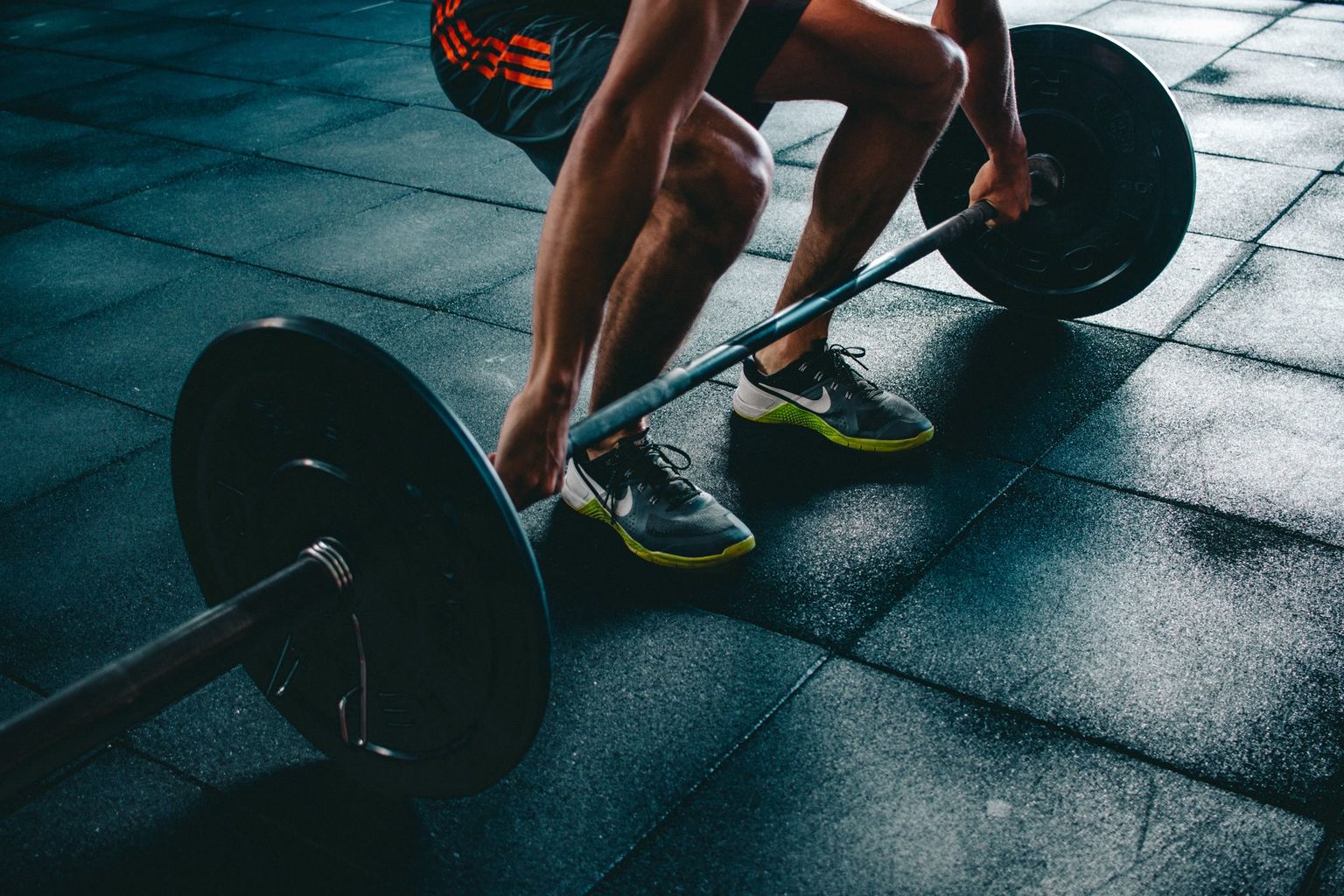Upper Chest Workout: A Science-Backed 8-Week Guide
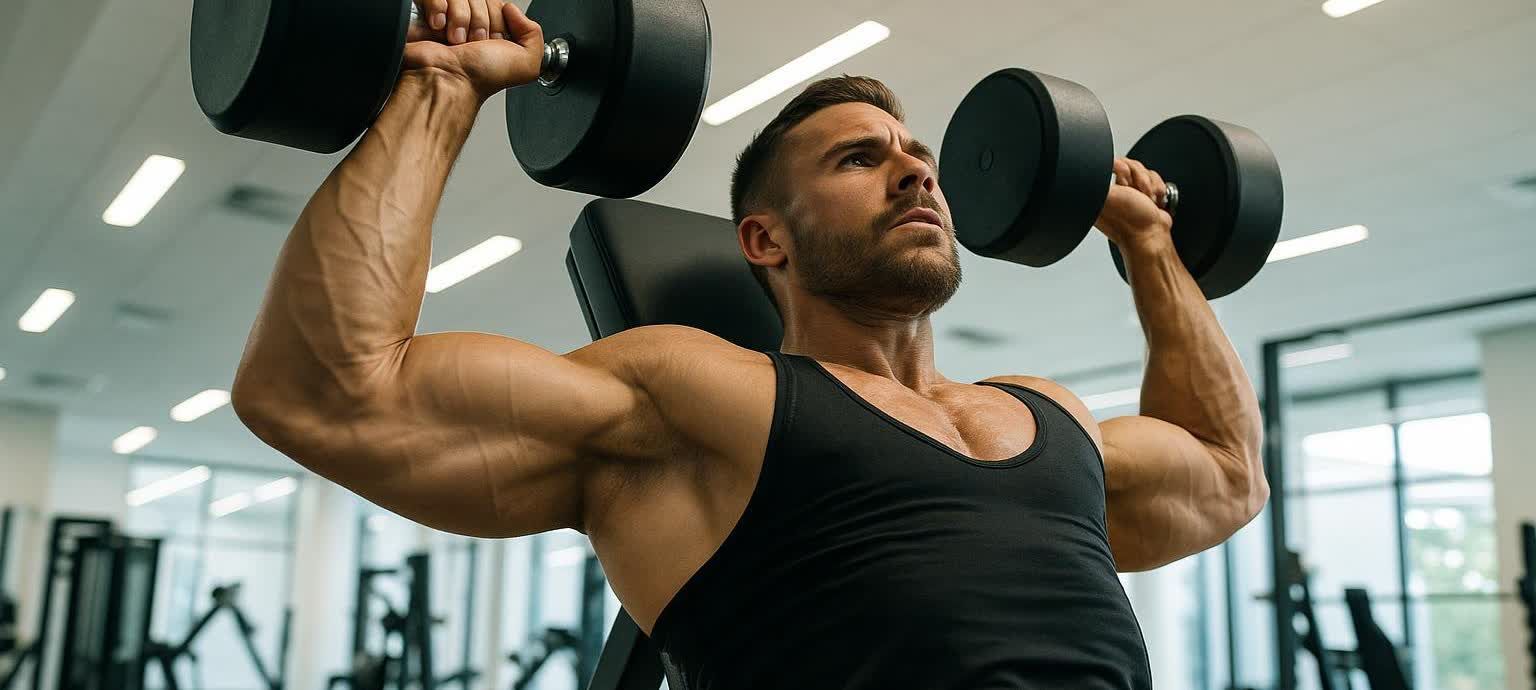
Upper Chest Workout: A Science-Backed 8-Week Guide
Want to build that shelf-like upper chest? Targeting the clavicular head of the pectoralis major takes more than random incline presses. This guide distills the best science on angles, exercise selection, and programming into simple, effective workouts you can start today—whether you’re a beginner, plateaued intermediate, or coach programming for clients.
We’ll cover:
- Understanding upper chest anatomy and why angle matters
- The 10 best upper chest exercises with cues, sets/reps, and common mistakes
- Sample workouts for every level (home and gym)
- An 8-week progression plan to break plateaus
- FAQs on incline angle, rep ranges, and rest periods
- How to verify real progress with BodySpec DEXA
Understanding Upper Chest Anatomy and Function
- The pectoralis major has multiple regions. The clavicular (upper) portion contributes to shoulder flexion and horizontal adduction—think pressing up and inward from low-to-high. Authoritative anatomy sources note that pec major as a whole adducts and internally rotates the humerus, while the clavicular fibers help flex the arm (anatomy overview).
- Why bench angle matters: EMG research shows a mild incline increases activation of the upper pec fibers. In one controlled trial testing 0°, 15°, 30°, 45°, and 60°, the upper pec peaked around ~30°, while steeper angles shifted more work to the front delts and reduced pec output (five-inclination EMG study). Another study found that 30° and 45° inclines boosted upper-pec activity at specific points of the press, while a flat bench remained excellent overall for both upper and lower pec activation (bench angle EMG).
- Practical takeaway: Aim for 15–30° bench inclines to bias the upper chest; avoid very steep inclines (>45°) if the goal is pec growth due to higher anterior deltoid contribution.
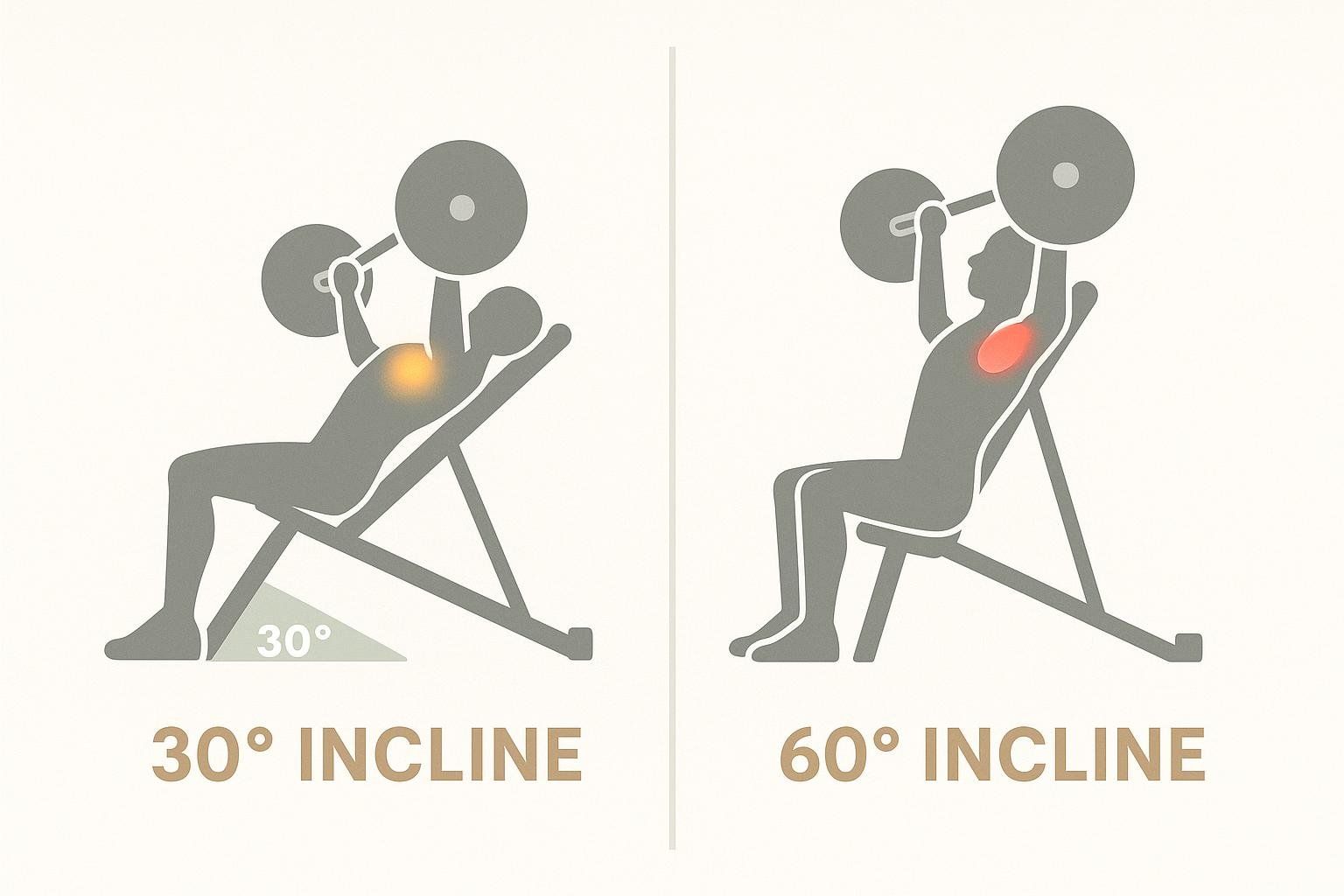
How many sets, reps, and rest for growth?
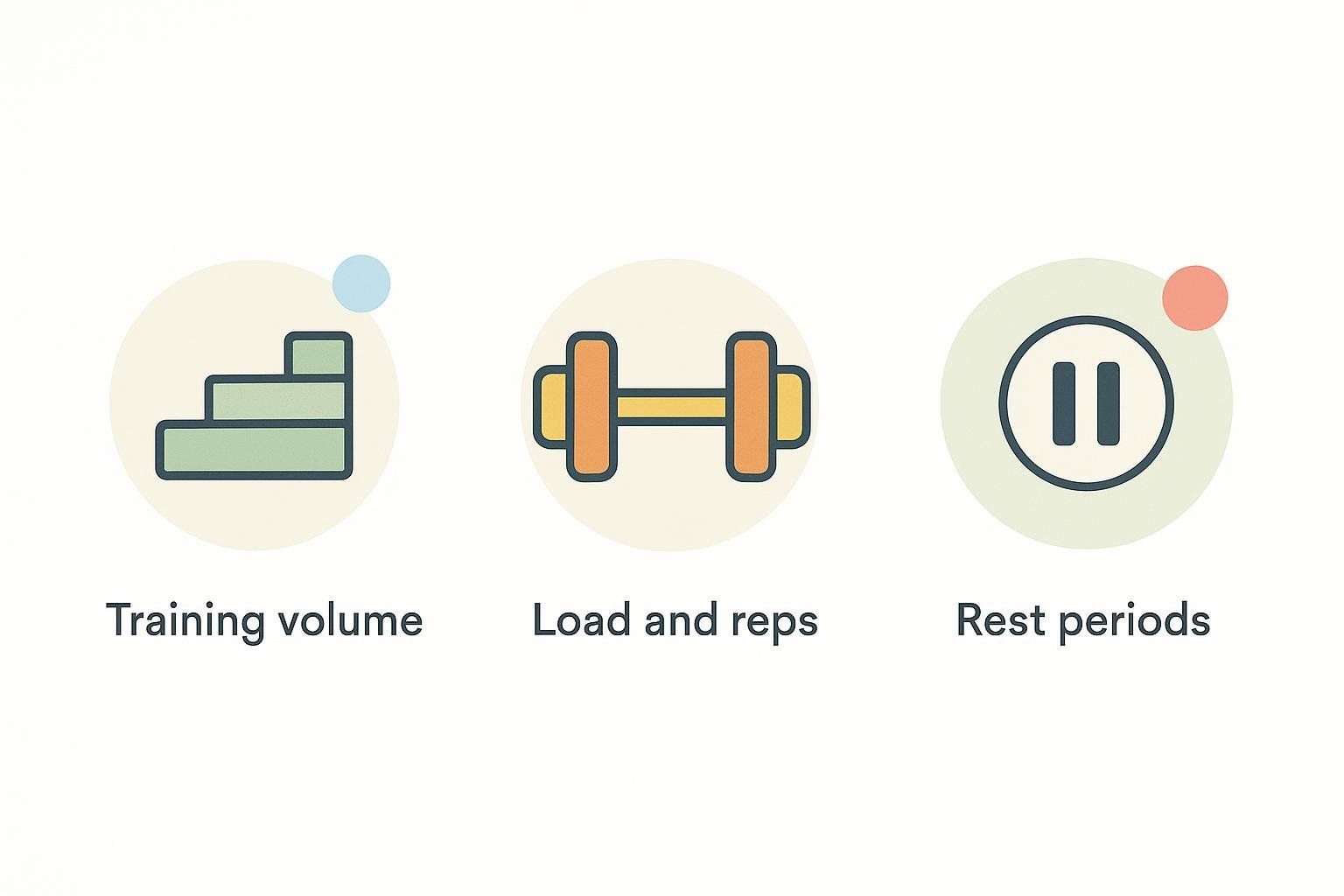
- Weekly volume:
- A meta-analysis shows a graded dose-response—more weekly sets generally yield more hypertrophy (volume meta-analysis).
- Many lifters grow well around ~10–20 quality sets per muscle per week.
- For chest, target 10–16 sets/week, with at least half biased to upper-chest vectors (inclines, low-to-high arcs).
- Reps and load:
- Hypertrophy occurs across a broad load range when you train close to failure.
- Similar muscle growth with low loads and high loads when sets are taken near failure; heavy loads win for maximal strength (load x hypertrophy; fiber-level meta-analysis).
- Use 6–12 reps on compound presses and 8–15+ on isolation moves, finishing most sets with ~1–3 reps in reserve (RIR).
- Rest periods:
- Longer rests can enhance growth by allowing higher performance across sets.
- In trained men, 3-minute rests beat 1-minute rests for strength and hypertrophy across an 8-week program (rest-interval RCT).
- Use 90–150s on compound presses and 60–120s on isolation.
The 10 best upper chest exercises (with cues and programming)
Use a controlled 2–3 second lower, smooth drive up, and stop 1–2 reps shy of failure to manage fatigue while maximizing stimulus.
- Incline Barbell Bench Press (15–30°)
- Why: Highest upper-pec activation around ~30°; heavier loading potential for progressive overload (five-inclination EMG).
- How: Set the bench to a mild incline. Eyes under the bar, shoulder blades retracted and depressed. Lower to upper chest with forearms vertical; press up and slightly back to stack over shoulders. Keep scapulae pinned and avoid shrugging the shoulders toward the ears.
- Program: 3–5 sets of 5–8 reps @ RPE 7–9; rest 120–150s.
- Incline Dumbbell Bench Press (15–30°)
- Why: Similar angle benefits with greater range of motion and independent arms.
- How: Neutral or slight pronated grip. Touch bells near upper chest and press up-and-in. Maintain elbows ~45–60° from the torso and keep shoulder blades retracted.
- Program: 3–4 sets of 6–10 reps @ RPE 8; rest 90–120s.
- Low-to-High Cable Fly (or Press)
- Why: Follows the upper-fiber line of pull (low-to-high). Great for adduction and a peak squeeze.
- How: Pulleys low. Soft elbows; sweep hands up-and-in to clavicle height; 1–2s pause.
- Program: 3–4 sets of 10–15 reps @ RPE 8–9; rest 60–90s.
- Incline Machine Chest Press (15–30° seat position)
- Why: Stable path to push near failure safely.
- How: Set handle path to line up with upper chest. Keep shoulder blades packed; avoid forward shoulder roll.
- Program: 3–4 sets of 8–12 reps @ RPE 8–9; rest 90–120s.
- Landmine Press (High Arc)
- Why: The diagonal press path biases shoulder flexion/adduction in a shoulder-friendly groove—useful variety when straight inclines bother shoulders.
- How: Half-kneeling or standing. Press the bar up-and-forward; guide the arc slightly inward.
- Program: 3 sets of 8–12 reps/side @ RPE 8; rest 60–90s.
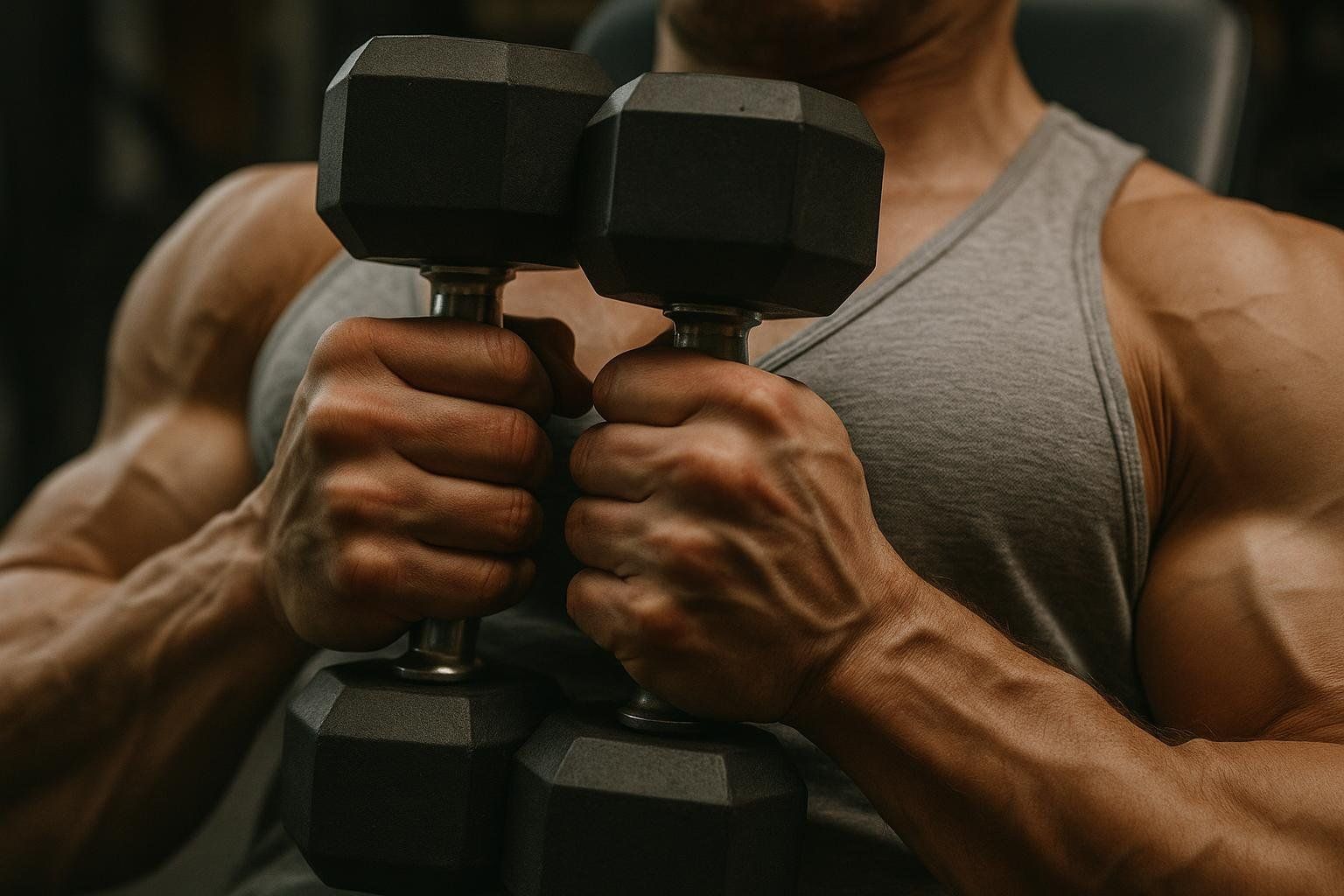
- Incline Dumbbell Squeeze Press (Crush Grip)
- Why: Emphasizes horizontal adduction and constant tension on the upper pecs by squeezing the dumbbells together throughout the press.
- How: Set bench to 15–30°. Hold two dumbbells together over upper chest with neutral grips; keep bells lightly pressed together as you lower and press. Maintain elbows ~45–60° from torso.
- Program: 3 sets of 8–12 reps @ RPE 8; rest 60–90s.
- Reverse-Grip Barbell Bench (Flat or Slight Incline)
- Why: A supinated grip increases shoulder flexion demand and can bias clavicular fibers for some lifters.
- How: Use a spotter. Grip width just outside shoulders; touch high on chest.
- Program: 3 sets of 6–10 reps @ RPE 8; rest 90–120s.
- Incline Cable Press (Low Anchor)
- Why: Combines press stability with the low-to-high line.
- How: Set bench between cable stacks at low pulley height. Press up-and-in; control the eccentric.
- Program: 3 sets of 8–12 reps @ RPE 8; rest 60–90s.
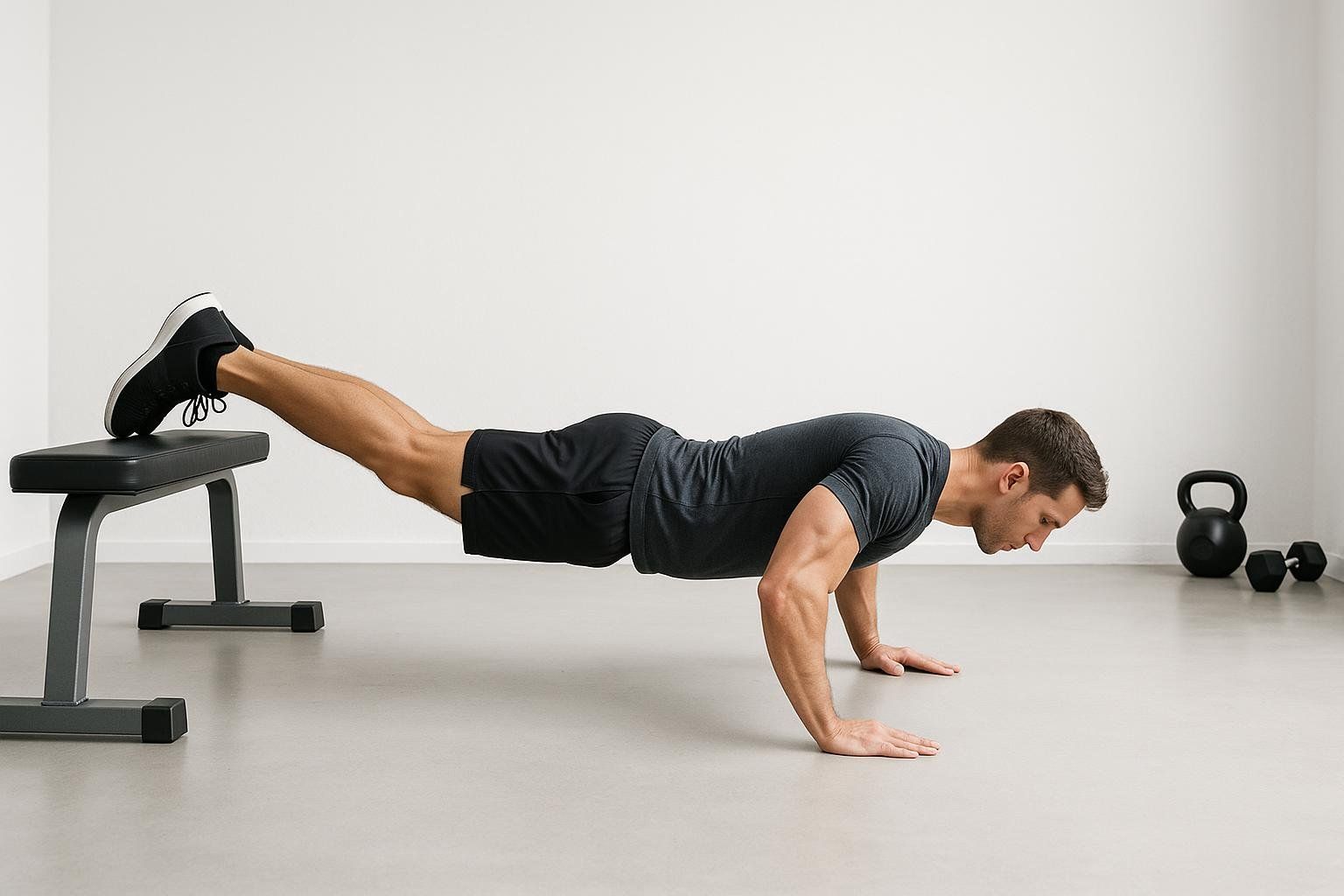
- Feet-Elevated Push-Up (Upper-Bias)
- Why: Accessible bodyweight option; elevating the feet increases the shoulder-flexion demand to bias the upper chest.
- How: Place feet on a bench or box (8–16"). Hands just outside shoulder width; elbows ~30–45° from torso. Lower chest forward between hands; press up with a straight body line.
- Program: 3–4 sets near-but-not-to-failure (leave ~1 rep in reserve); rest 60–90s.
- Incline Smith Machine Press (15–30°)
- Why: Lets you push hard with reduced stabilization cost; useful for high-effort top sets then back-off volume.
- How: Set bench so bar path touches upper chest. Keep wrists stacked and shoulder blades set.
- Program: Top set 6–8 reps @ RPE 9, then 2 back-off sets of 8–10 @ RPE 8; rest 120s.
Advanced Techniques
- Wide-Grip Incline DB Press (Horizontal Adduction Emphasis): With a mild incline and wider elbows (not extreme), this emphasizes upper-pec fibers via horizontal adduction. This variation carries a higher risk of shoulder impingement. It is best suited for experienced lifters who can maintain excellent control with lighter loads and a controlled range of motion. If you feel anterior shoulder discomfort, switch to a safer incline press or fly variation.
- Compound set finisher: Feet-Elevated Push-Up to Incline DB Squeeze Press, 2–3 rounds at 1 RIR per movement; rest 90s between rounds.
Sample upper chest workouts (beginner, intermediate, advanced)
Beginner (3x/week full-body or 2x/week upper)
- Incline DB Bench (15–20°): 3 x 8–10 @ RPE 8
- Low-to-High Cable Fly: 3 x 12–15 @ RPE 8–9
- Landmine Press (single-arm): 3 x 8–10/side @ RPE 8
- Optional finisher: Feet-Elevated Push-ups: 2 sets near-failure leaving 1–2 reps in reserve
Intermediate (Upper emphasis day)
- Incline Barbell Bench (15–30°): 4 x 5–8 @ RPE 7–9; rest 120–150s
- Incline DB Bench (15–30°): 3 x 8–10 @ RPE 8; rest 90s
- Low-to-High Cable Fly or Press: 3 x 10–15 @ RPE 8–9; rest 60–90s
- Reverse-Grip Bench (slight incline optional): 3 x 6–8 @ RPE 8; rest 120s
Advanced (Volume + variety)
- Incline Barbell Press: 5 x 3–6 @ RPE 7–8; rest 150s
- Incline Smith Machine Press: 1 top set 6–8 @ RPE 9 + 2 x 8–10 @ RPE 8
- Incline Cable Press (low anchors): 3 x 8–12 @ RPE 8–9
- Low-to-High Cable Fly (single-arm): 2–3 x 12–15 @ RPE 8–9
- Finisher (optional): Compound set—Feet-Elevated Push-Up to Incline DB Squeeze Press, 2–3 rounds at 1 RIR per movement; rest 90s between rounds
Home/Gym Lite (Minimal equipment)
- Feet-Elevated Push-Ups: 4 sets near-failure (1 RIR)
- Bands or Cables Low-to-High Fly: 3 x 12–15 @ RPE 8
- Single-DB Landmine Press (secure one end in a corner and cushion with a towel): 3 x 8–12/side @ RPE 8
8-week upper chest progression plan
Aim for 10–16 chest sets/week, with 6–10 sets biased to upper-chest angles. Add a rep before load, or add 2.5–5 lb when you hit the top of the range with the target RPE. Deload every 4th week by trimming volume 25–35%.
| Week | Primary Incline Press | Secondary Incline/Smith | Isolation (Low-to-High) | Notes |
|---|---|---|---|---|
| 1 | 3 x 6–8 @ RPE 8 | 3 x 8–10 @ RPE 8 | 3 x 12–15 @ RPE 8 | Baseline: dial in setup and tempo |
| 2 | 4 x 6–8 @ RPE 8 | 3 x 8–10 @ RPE 8 | 3 x 12–15 @ RPE 8 | Volume bump: +1 set on primary |
| 3 | 4 x 6–8 @ RPE 8–9 | 3 x 8–10 @ RPE 8–9 | 3 x 12–15 @ RPE 8–9 | Progressive overload: add 2.5–5 lb at top-of-range |
| 4 | 3 x 5–7 @ RPE 8 | 2 x 8–10 @ RPE 7–8 | 2 x 12–15 @ RPE 7–8 | Deload: −25–35% volume; −5% load |
| 5 | 4 x 5–7 @ RPE 8 | 3 x 6–8 @ RPE 8 | 3 x 10–12 @ RPE 8 | Resume: +2.5–5 lb vs. Week 3 |
| 6 | 4 x 6–8 @ RPE 8–9 | 3 x 6–8 @ RPE 8 | 3 x 12–15 @ RPE 8–9 | Rep push: add ≥1 rep on two sets per lift |
| 7 | 5 x 3–5 @ RPE 7–8 | 3 x 8–10 @ RPE 8 | 3 x 12–15 @ RPE 8 | Strength focus: increase load on primary press |
| 8 | 4 x 6–8 @ RPE 8 | 3 x 6–8 @ RPE 8 | 3 x 12–15 @ RPE 8 | Peak: use Week 7 loads; aim +1 rep/set or re-test 6–8RM @ RPE 8 |
Measuring Progress and Confirming Muscle Growth
Objective measurement helps you validate whether your program is working. Scale weight can’t distinguish water, fat, and muscle. A DEXA assessment provides separate estimates of fat mass, lean mass, and even visceral fat, enabling more precise adjustments to training and nutrition. Many athletes use a baseline scan and a follow-up after 6–8 weeks to evaluate lean-mass changes in the chest and upper body.
Helpful resources:
- Understanding DEXA Accuracy
- Interpreting DEXA Results
- Lean-Bulk Nutrition Templates
- Lower Chest Workout Guide
- Total Chest Workout Blueprint
FAQs
What’s the best incline for upper chest?
- Around 15–30°. At ~30°, studies report peak upper-pec EMG, while steeper than 45° shifts work toward the anterior deltoid (five-inclination EMG; bench angle EMG).
How many reps build the upper chest?
- Use 5–12 reps for presses and 8–15+ for fly/press isolations. Growth is similar across a wide load range when you train close to failure (meta-analysis).
How long should I rest between sets?
- 90–150s on compound presses; 60–120s on isolation. Longer rests can enhance long-term strength and hypertrophy by preserving performance across sets (rest RCT).
Can I grow my upper chest at home?
- Yes. Prioritize feet-elevated push-ups, bands/cables for low-to-high arcs, and landmine-style presses.
How often should I train upper chest?
- 1–2 focused sessions per week works. Match frequency to your schedule; total weekly sets drive growth.
The bottom line
For a fuller, stronger-looking chest, chase angles that match the upper pec’s line of pull (15–30° inclines and low-to-high arcs), accumulate 10–16 quality sets each week, and progress reps or load within RPE 7–9. Then confirm muscle gain—not just a pump—with periodic objective assessments like DEXA every 6–8 weeks.

